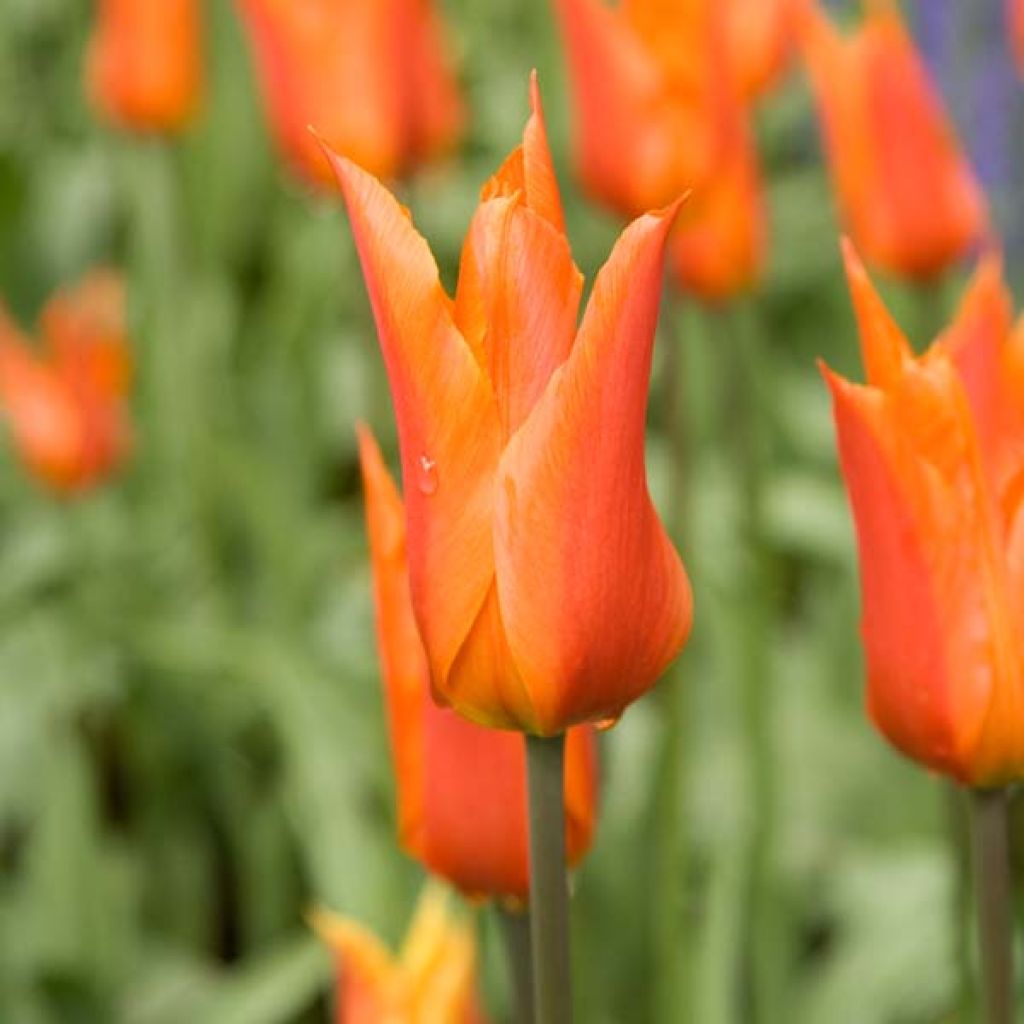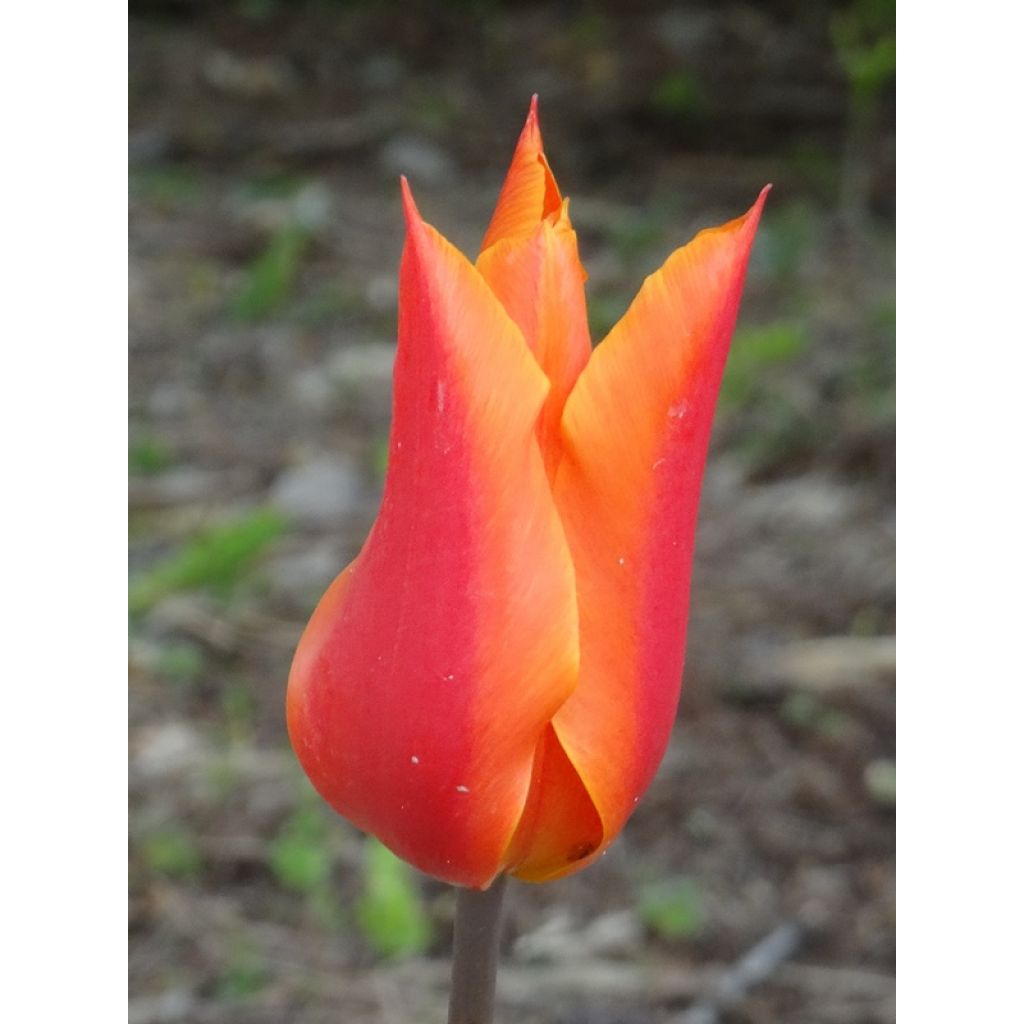

Tulipa Ballerina - Lily flowering Tulip


Tulipa Ballerina - Lily flowering Tulip


Tulipa Ballerina - Lily flowering Tulip


Tulipa Ballerina - Lily flowering Tulip


Tulipa Ballerina - Lily flowering Tulip


Tulipa Ballerina - Lily flowering Tulip


Tulipa Ballerina - Lily flowering Tulip
Tulipa Ballerina - Lily flowering Tulip
Tulipa Ballerina
Tulip
Very beautiful flowering.
Sylvie, 08/04/2023
This plant carries a 6 months recovery warranty
More information
We guarantee the quality of our plants for a full growing cycle, and will replace at our expense any plant that fails to recover under normal climatic and planting conditions.
From €5.90 for pickup delivery and €6.90 for home delivery
Express home delivery from €8.90.

Does this plant fit my garden?
Set up your Plantfit profile →
Description
The water-lily-flowered 'Ballerina' Tulip is a superb variety with slightly scented flowers, adorned with a beautiful bright orange colour, and borne on sturdy, weather-resistant stems. This flower, shining like a spring sun, also possesses the natural elegance of tulips in this group; elongated flowers with slender petals. Its late flowering in May allows for charming and natural combinations with biennials or annuals such as wallflowers, poppies, stock, and forget-me-nots, to feel inspired like Monet's garden in Giverny.
The 'Ballerina' lily flower tulip belongs to the Liliaceae family. It is classified in Division 6 of horticultural tulips, which has 15 divisions. Their main characteristics are as follows: they have single flowers, they bloom in the second half of spring, and they have narrow cup-shaped flowers with pointed and recurved petals when opening and at night, which open into a star shape when fully bloomed. During the day, these flowers become spider-like and widely open. They were created in the early 20th century. This variety will reach a height of 45 cm (18in) when in bloom. The flowering takes place at the end of April. The colour of this orange flower, touched with tangerine, is enhanced by its slightly translucent texture in the sunlight. The foliage is thinner than that of other tulips. Each solitary flower is supported by a fragile-looking stem, but resistant to bad weather.
The 'Ballerina' water-lily-flowered tulip finds its place in large flower beds. Its beautiful bright tone allows for combinations with white tulips, creating a beautiful harmony. This also maximizes the duration of the flower bed's flowering period. Combine it with Corsican hellebores and euphorbias, and you will create surprising scenes. It can also be planted in borders, rockeries, flower beds, as well as in pots and planters. This tulip also beautifies balconies and terraces. It is ideal for creating sumptuous bouquets. In a vase, add very little water! Moreover, if your tulips open too quickly, you can add two to three ice cubes in the vase every day. Many varieties of lily flower tulips are grown for forcing and produce cut flowers for a large part of the year.
About botanical species: Tulip species are found from Western Europe to China and Japan, through Eastern Europe, Asia Minor, and Central Asia. They are also present in North Africa and the Indian subcontinent. The centre of diversity for the genus is located in the Pamir and Hindu Kush Mountains and the steppes of Kazakhstan.
In Europe, there are various wild species, many of which are endangered. These are either large adventive tulips from cultivated fields, the most well-known being the Agen tulip (Tulipa agenensis), or small tulips found in wooded areas or among rocks in the mountains. In cultivation, they are called “botanical tulips”, and one of the most common is the wild tulip (Tulipa sylvestris), which used to commonly grow sheltered by vines and whose subspecies australis is known as the southern tulip.
Report an error about the product description
Plant habit
Flowering
Foliage
Botanical data
Tulipa
Ballerina
Liliaceae
Tulip
Cultivar or hybrid
Planting and care
Plant your tulips as soon as possible in a well-drained soil. Loosen the soil deeply. Plant them at a depth of 15 cm (6in) (Bulbs should be covered with twice their height of soil). Space the bulbs a few cm apart, making sure they do not touch. Choose a sunny location for better flowering. After flowering, cut the flower stalks and let the leaves dry completely before cutting them. After flowering, their foliage becomes unsightly and wilted, we recommend planting Heucheras, Tiarellas, Brunneras, Bleeding Hearts, Cypress Spurge, in the foreground of your flower beds, their foliage will enhance the colours of your tulips and during the season, they will elegantly hide their yellowed leaves.
Planting period
Intended location
Care
-
, onOrder confirmed
Reply from on Promesse de fleurs
Haven't found what you were looking for?
Hardiness is the lowest winter temperature a plant can endure without suffering serious damage or even dying. However, hardiness is affected by location (a sheltered area, such as a patio), protection (winter cover) and soil type (hardiness is improved by well-drained soil).

Photo Sharing Terms & Conditions
In order to encourage gardeners to interact and share their experiences, Promesse de fleurs offers various media enabling content to be uploaded onto its Site - in particular via the ‘Photo sharing’ module.
The User agrees to refrain from:
- Posting any content that is illegal, prejudicial, insulting, racist, inciteful to hatred, revisionist, contrary to public decency, that infringes on privacy or on the privacy rights of third parties, in particular the publicity rights of persons and goods, intellectual property rights, or the right to privacy.
- Submitting content on behalf of a third party;
- Impersonate the identity of a third party and/or publish any personal information about a third party;
In general, the User undertakes to refrain from any unethical behaviour.
All Content (in particular text, comments, files, images, photos, videos, creative works, etc.), which may be subject to property or intellectual property rights, image or other private rights, shall remain the property of the User, subject to the limited rights granted by the terms of the licence granted by Promesse de fleurs as stated below. Users are at liberty to publish or not to publish such Content on the Site, notably via the ‘Photo Sharing’ facility, and accept that this Content shall be made public and freely accessible, notably on the Internet.
Users further acknowledge, undertake to have ,and guarantee that they hold all necessary rights and permissions to publish such material on the Site, in particular with regard to the legislation in force pertaining to any privacy, property, intellectual property, image, or contractual rights, or rights of any other nature. By publishing such Content on the Site, Users acknowledge accepting full liability as publishers of the Content within the meaning of the law, and grant Promesse de fleurs, free of charge, an inclusive, worldwide licence for the said Content for the entire duration of its publication, including all reproduction, representation, up/downloading, displaying, performing, transmission, and storage rights.
Users also grant permission for their name to be linked to the Content and accept that this link may not always be made available.
By engaging in posting material, Users consent to their Content becoming automatically accessible on the Internet, in particular on other sites and/or blogs and/or web pages of the Promesse de fleurs site, including in particular social pages and the Promesse de fleurs catalogue.
Users may secure the removal of entrusted content free of charge by issuing a simple request via our contact form.
The flowering period indicated on our website applies to countries and regions located in USDA zone 8 (France, the United Kingdom, Ireland, the Netherlands, etc.)
It will vary according to where you live:
- In zones 9 to 10 (Italy, Spain, Greece, etc.), flowering will occur about 2 to 4 weeks earlier.
- In zones 6 to 7 (Germany, Poland, Slovenia, and lower mountainous regions), flowering will be delayed by 2 to 3 weeks.
- In zone 5 (Central Europe, Scandinavia), blooming will be delayed by 3 to 5 weeks.
In temperate climates, pruning of spring-flowering shrubs (forsythia, spireas, etc.) should be done just after flowering.
Pruning of summer-flowering shrubs (Indian Lilac, Perovskia, etc.) can be done in winter or spring.
In cold regions as well as with frost-sensitive plants, avoid pruning too early when severe frosts may still occur.
The planting period indicated on our website applies to countries and regions located in USDA zone 8 (France, United Kingdom, Ireland, Netherlands).
It will vary according to where you live:
- In Mediterranean zones (Marseille, Madrid, Milan, etc.), autumn and winter are the best planting periods.
- In continental zones (Strasbourg, Munich, Vienna, etc.), delay planting by 2 to 3 weeks in spring and bring it forward by 2 to 4 weeks in autumn.
- In mountainous regions (the Alps, Pyrenees, Carpathians, etc.), it is best to plant in late spring (May-June) or late summer (August-September).
The harvesting period indicated on our website applies to countries and regions in USDA zone 8 (France, England, Ireland, the Netherlands).
In colder areas (Scandinavia, Poland, Austria...) fruit and vegetable harvests are likely to be delayed by 3-4 weeks.
In warmer areas (Italy, Spain, Greece, etc.), harvesting will probably take place earlier, depending on weather conditions.
The sowing periods indicated on our website apply to countries and regions within USDA Zone 8 (France, UK, Ireland, Netherlands).
In colder areas (Scandinavia, Poland, Austria...), delay any outdoor sowing by 3-4 weeks, or sow under glass.
In warmer climes (Italy, Spain, Greece, etc.), bring outdoor sowing forward by a few weeks.


































